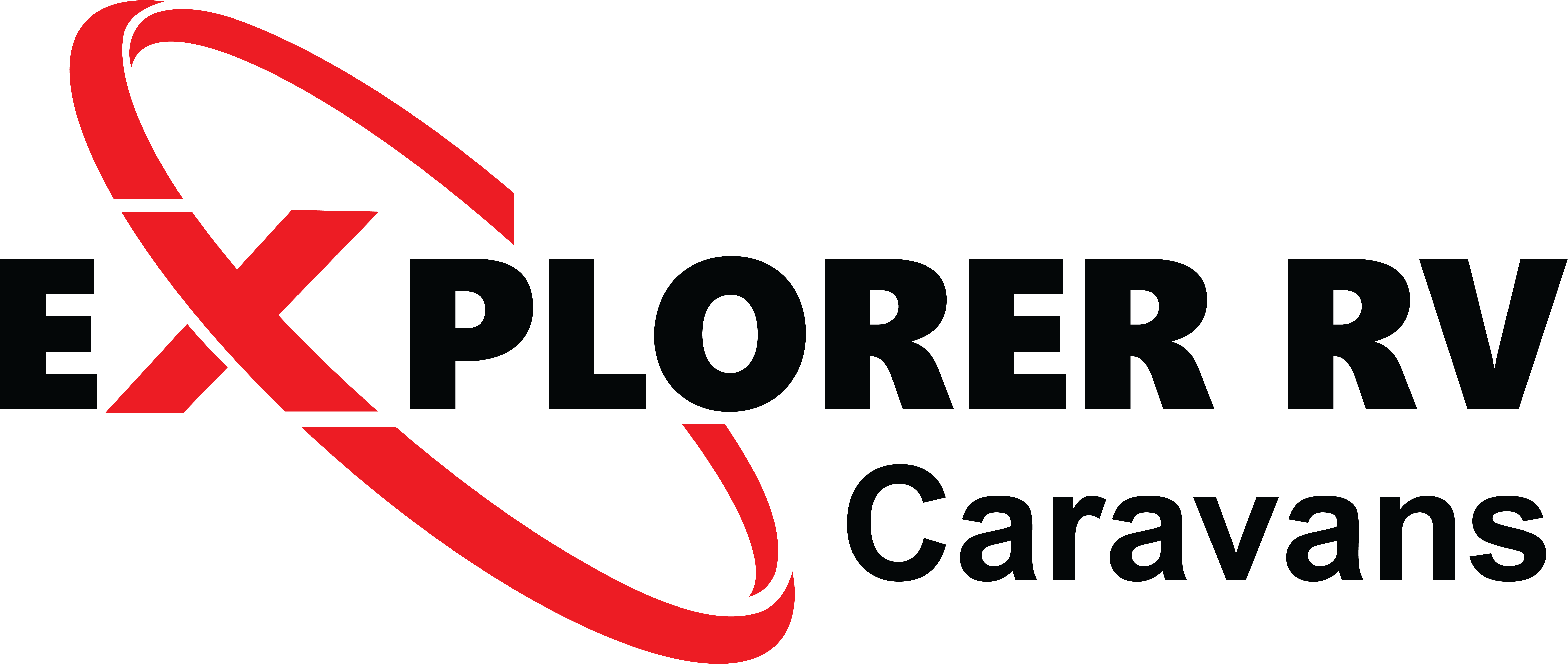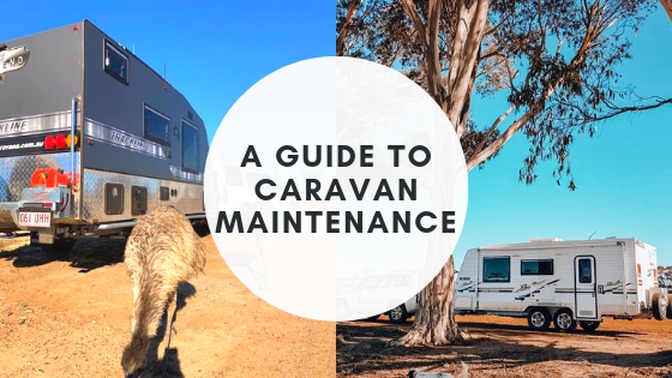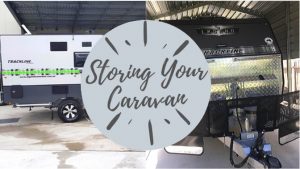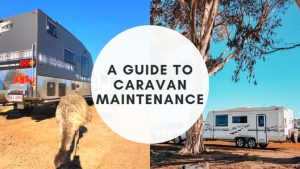Caravans. For many, they’re a source of pride and joy. Think happy holiday memories, think the trusty caravan.Caravans spend plenty of time chasing bitumen, so wear and tear is inevitable. That’s why proper caravan care and maintenance are essential.
This care is not only necessary for your safety but also helps to ease the wound to your hip pocket. You’ve likely parted with plenty of cash to purchase your home away from home, so you want your caravan to have the longest life possible.
To help, check out this the ultimate guide so you can best care for and maintain your caravan. Happy towing!
Although maintenance procedures for caravans, trailers etc. are mostly common sense and follow the same principals as other vehicles, the following points may assist in covering areas that may otherwise be overlooked. Starting at the front of the caravan, the following points should be especially considered:
COUPLINGS1. Override
Check that the coupling is effectively lubricated and that head and shaft rotates freely (apply grease through nipples). Adjusting screw and nut should not be frozen in head and should be adjusted to stop ball from rattling (oil adjusting screw shaft by turning coupling upside down. Lightly grease inside coupling head where it fits over towball).
Backing stop should move freely.
OR
2. Hydraulic
Ensure free movement of all parts. Master cylinder cap should be in good condition to prevent moisture entering reservoir.
OR
3. Fixed
Check operation of spindle and screw nut. NOTE: On all couplings, trigger lock on handle should be moving freely and in good condition (oil regularly).
HANDBRAKE
Check for rust or corrosion where base plate fixes to A frame.Handbrake level should move freely and should travel approximately 15mm when correctly adjusted (adjust with turnbuckle).Check condition of brake cable and pulleys.
SAFETY CHAIN
Should have no visible signs of rust or cracks at fixing point and should be long enough to reach towbar chain hook and allowing for cornering.
JOCKEY WHEEL
Handle and wheel should turn freely (if lubrication is needed, squirt oil under handle to travel down shaft).Wheel should spin on axle freely. Check clamp and clamp bolt for easy operation (apply oil to thread if necessary). Should be checked regularly for rust and stress fractures, particularly outriggers and all cross member fixing points, A frame, springs and spring hangers and stabiliser legs.
Check for signs of movement around spring hangers, shackle plates and bushes, U-bolts and fish plates. Check jack legs for ease of movement and ensure handle is in good condition.Check step for cracks, rust and ease of operation.
NOTE: Surface rust should be removed by sanding or with a wire brush and metal surface then painted with an anti-rust paint.
MAIN DOOR
Lubricate door lock and hinges with light oil (CRC type).Check condition and operation of annex roller and cabin hooks. Door lock tongue and striker plate should be regularly checked for signs of wear.
WHEELS, RIMS AND TYRES
Check rims for buckles, cracks or other damage after each trip. Check tyres for signs of excessive wear from under/over inflation or wheel alignment problems. Bearings and oil seals should be inspected and repacked regularly and definitely before any proposed long trip.Brake shoes should be checked for signs of uneven wear and drums for any marks that may indicate early signs of brake deficiency.
Hydraulic lines should be checked for signs of leaking.If electric brakes are fitted, drums should be cleared of sand/gravel deposits to prevent excessive wear on magnets.
NOTE: Operation of all braking systems should be regularly checked for signs of wear or fatigue in wires, clamps or connections.
WATER TANK
Check hoses for leaks, kinks, signs of wear. Check hoses for any mildew growth in hose.Check clamps for tension. Check tank straps for signs of cracking or rust. Stoneguard, if fitted, should be checked for dints that may rub holes in tank.
EXTERIOR OF VAN
General condition of aluminium – check particularly for cracks in sheet or corrosion in roof sheets. Check for movement above door and in lower corners of van. May indicate chassis or frame movement (movement is usually indicated by black rubbing marks).
WINDOWS
Check glasses for cracks. Internal and external sealing rubbers for signs of being perished or ill fitting. Check easy operation of windows (forcing windows will break glass).

SHADES AND PROTECTION
Pay particular attention to hinges and fixings. Operation of stays and locks should be regularly serviced (apply light oil – CRC etc).
CORNER MOULDS
Sealing and around corner moulds – windows, doors etc. should be checked for cracks or holes that may allow water to enter and rot framing or lining sheets.
NOTE: Corner moulds should be resealed every 5-7 years.
EXTERIOR LIGHTING
Important for safety aspect that all 12V brake indicator, tail and running lights should be operative and lenses not faded. Check rubber seals around all exterior light bases to prevent intrusion of water. Check 12V wiring and plug for any signs of breakage or insect nests in 12V plug.
GAS FITTINGS
Check gas connections by turning bottle on and spraying fittings with detergent, and look for bubbles.Never use exposed flame (matches or cigarette lighter) to check for leaks.Check flexible hose for fraying or kinks.
NOTE: At the time of sale of any caravan fitted with or capable of being fitted with LP gas appliances, (i.e. gas lines fitted) a current certificate of compliance must be supplied by the seller to the buyer. Serious consequences can eventuate if this law is not adhered to.
INTERIOR OF VAN
Hatch mechanisms should be lubricated and free of rust or corrosion. All flyscreens should be intact and still attached to rubber mould or aluminium framing. Check cupboards for movement that may indicate chassis problems (look for black rubbing marks near ceiling, walls and floor where furniture attaches). Cupboard locks should be lubricated to avoid jamming that may strain and break lock. Check light glasses and affixing buttons for cracks.Fridge and stove should be firmly fixed to surrounds – loose bolts could result in appliance jarring loose in travel. (Grasp appliance and attempt to move back and forth). Check mattresses regularly for signs of moisture retention – causes premature wear. Any discolouration of ply lining around hatch windows or any ceiling, floor or wall corners indicates the intrusion of water that may rot framing or lining unless rectified quickly.
IMPORTANT NOTE: Any suspected problems with gas lines or the operation of any gas appliance or electrical fault should be referred to a qualified gas fitter or electrician respectively and should not be tampered with by an unqualified person.
STORAGE
Due to the new compound tyres available to the motor industry, there is no real need to store caravans ‘on blocks’ as in the days of rubber tyres. The only advantage of ‘blocking’ a van is to take the pressure off the bearings; again not totally necessary.
NOTE: Any major repairs or queries on caravans should be referred only to an approved member of the Caravan Trade and Industries Association in your state or territory.
Article originally featured on BIG 4 Adventure Park




